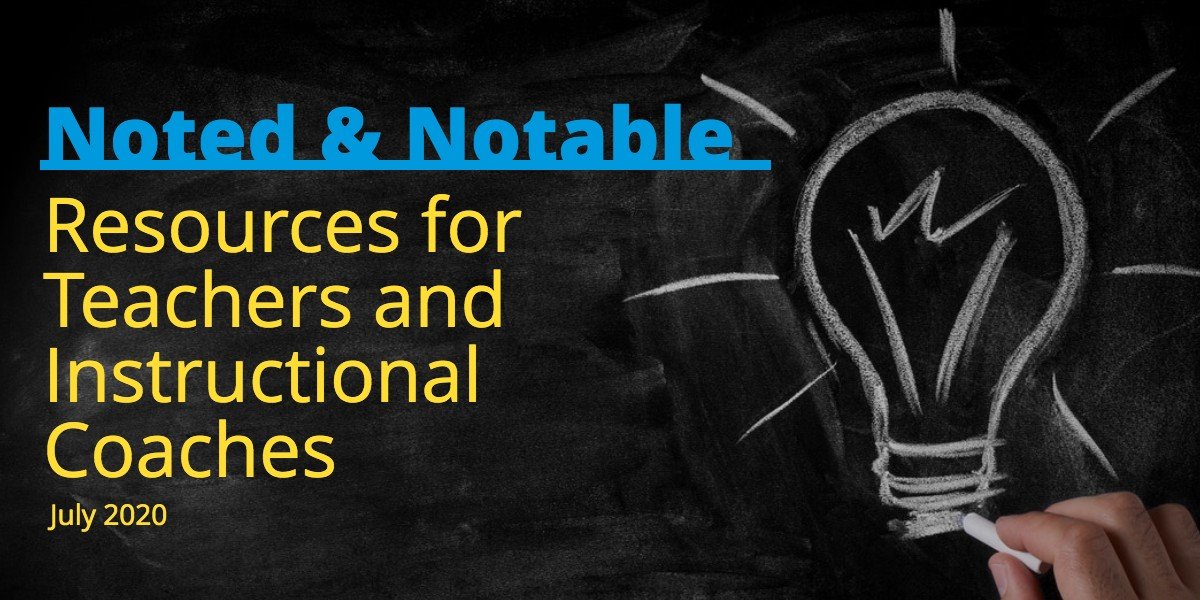Top Recommended Reading for Instructional Coaches and Teachers – July 2020

Although the outlook may still be undetermined, the school year is drawing near. Teachers and instructional coaches are gearing up for an unforgettable academic year by ramping up their technological skillsets. Well-honed remote teaching skills will most likely be a foundation for success for many teachers. Consequently, professional development that arms educators with a better edtech tool belt will ultimately lead to positive results for students.
Here are some resources for educators that are centered around the professional development funding stream available in the CARES act, the easiest ways to boost student engagement during remote learning, and the types of professional development that teachers should be seeking out right now.
Good news! The CARES Act funding for PD is available now
Many district leaders are trying to determine how to support educators to teach in this constantly changing landscape. Fortunately, there is money in the CARES Act that can be directly used to support professional learning efforts.
When the CARES Act was signed into law in early March, it included an Education Stabilization Fund (ESF) that provided $13.5 billion in funding relief for K-12 schools. ESF can be used for anything covered by existing K-12 authorized programs, including professional learning.
This is an important time to remind your district leaders (school board members, district administrators and district professional learning directors) that professional learning is an allowable use of the CARES Act funding and that investing in educators is the lynchpin to making sure that all of their other COVID-related purchases have the maximum impact.
ESF allocations for professional learning can be used to address short-term needs around distance learning but also, importantly, to invest in long term professional learning that is collaborative, ongoing, and job-embedded. Educators’ needs for sustained and continuous improvement in using technology for both adult and student learning will not end any time soon.
Read more on Learning Forward: Where is the PD in CARES
Tricks and tips to boost student engagement during remote learning
Many teachers are working to improve the student experience when it comes to remote learning. Some tips include breaking classing into small-groups, using social media to induce more participation, and designing hybrid and blended models of instruction.
“Students are more likely to stay focused when information is provided face-to-face,” says Jana Hunzicker, the associate dean of Bradley University’s College of Education. “Additionally, they need ‘small bites’ and opportunities to process each ‘bites.’ In a classroom, this can be accomplished by teaching for 10 minutes and then stopping for students to discuss or apply a concept with one another.”
This approach becomes more difficult when instruction shifts to videos and online lessons. “Often, video lectures are too long and don’t offer students opportunities to process or interact with the content,” says Hunzicker, who teaches undergraduate courses in young adolescent development, middle school instruction, and reading/language arts.
Read more on District Administration: 6 Steps For Boosting Student Engagement in Online Learning
Educators still need PD in a remote learning environment
Professional development is a common practice for educators in the summer. Typically, summertime PD is comprised of tips around creating classroom content, building classroom management skills, and learning pedagogical techniques. This summer has been different for many teachers as they have been attempting to build a technology acumen.
One of the consistent themes on teacher PD menus this summer are efforts to teach educators how to build engaging interactive content, including elements like simulations or animation. But a lot of the focus is on video, the most popular mode for synchronous learning. In some cases, educators are learning simpler tips, such as cybersecurity best practices or how much screen time teachers and students should have in a day.
Principals and district officials are also receiving guidance on how to do their jobs better in a remote learning environment. In Tennessee, for example, nearly 1,000 principals, assistant principals, and district staff accessed video sessions on topics such as digital learning, instructional models, and assessments.
“This type of training has to be available to every person on every level because it’s a new way of doing our jobs,” said Tennessee Education Commissioner Penny Schwinn, who noted that she is also taking professional development courses this summer focused on remotely supporting the state school system.
Read more on Education Week: 5 Tips for Remote Learning PD Success

